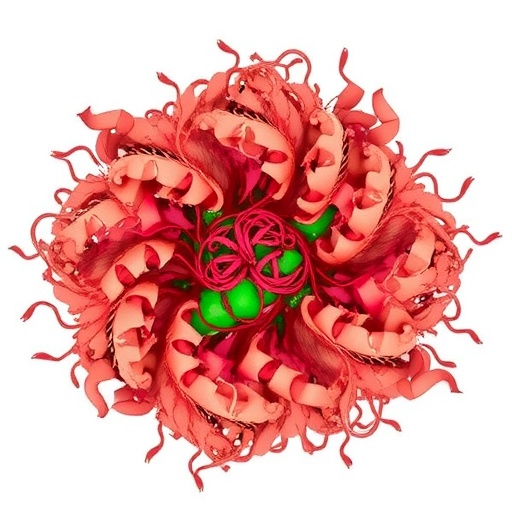In a groundbreaking study, researchers have delved into the intricate molecular mechanisms underlying Polycystic Ovary Syndrome (PCOS) through the lens of microRNA regulation. PCOS, a common endocrine disorder affecting a significant portion of women of reproductive age, is characterized by a complex interplay of hormonal imbalances, metabolic dysfunction, and reproductive challenges. Recent advancements in molecular biology have illuminated the critical roles played by microRNAs, small non-coding RNA molecules that regulate gene expression, in disease pathogenesis. Among these, miR-30c-5p has emerged as a potential key player in modulating Sirtuin (SIRT) gene expression, crucial for fertility and metabolic regulation.
The study led by Zhou, Zheng, and Luo highlights the specific regulatory functions of miR-30c-5p in relation to SIRT expression, which has notable implications for understanding the etiology of PCOS. The researchers employed various experimental models to dissect the molecular interactions between miR-30c-5p and SIRT, providing a comprehensive view of how these elements influence ovarian function. In the context of PCOS, investigating the dysregulation of these pathways could pave the way for new therapeutic approaches aimed at restoring hormonal balance and improving reproductive outcomes.
At the heart of this research lies the exploration of SIRTs, a family of proteins involved in cellular regulation and longevity. SIRT proteins have been recognized for their role in deacetylating proteins that contribute to cellular stress resistance and metabolic homeostasis. In PCOS patients, altered levels of SIRT expression have been correlated with the disorder’s clinical manifestations, including insulin resistance and anovulation. By focusing on the miR-30c-5p/SIRT axis, the study aims to unravel the complex genetic wiring that governs these processes, underlining the potential for targeted molecular therapies.
The experimental design incorporated comprehensive gene expression profiling and functional assays to validate the impact of miR-30c-5p on SIRT expression levels. Results indicated a significant inverse correlation between miR-30c-5p and SIRT expression, suggesting that elevated levels of miR-30c-5p may inhibit SIRT protein activity. Furthermore, functional assays demonstrated that manipulating miR-30c-5p levels influenced cellular outcomes related to apoptosis and cellular stress response pathways, highlighting its role in ovarian health and function.
In addition to molecular techniques, the research team employed in vivo models to observe the effects of altered miR-30c-5p levels on ovarian physiology. These models revealed significant changes in ovarian morphology and function in response to the modulation of miR-30c-5p, reinforcing the hypothesis that this microRNA is intricately involved in the pathophysiology of PCOS. The outcomes of these experiments point towards the potential for miR-30c-5p as a biomarker for PCOS and as a target for new treatment strategies aimed at restoring reproductive health.
Importantly, the study does not merely contribute to our understanding of PCOS at a cellular level but also emphasizes the need for comprehensive research into the systemic effects of microRNA regulation. The multifaceted nature of PCOS necessitates an integrative approach to research that considers genetic, hormonal, and environmental factors. By elucidating the relationship between miR-30c-5p and SIRT, this work underscores the necessity of interdisciplinary strategies to tackle complex endocrine disorders.
As the research community seeks to explore and validate these findings, potential pathways for future investigation are already emerging. For example, questions regarding the regulatory mechanisms controlling miR-30c-5p expression itself beg further exploration. Understanding the upstream regulators and signaling pathways involved in its modulation could unveil additional therapeutic avenues for PCOS management.
The implications of this research extend beyond reproductive health; they touch upon broader metabolic implications associated with PCOS, including obesity and insulin resistance. By targeting the miR-30c-5p/SIRT axis, there lies the potential not only to address fertility and menstrual irregularities but also to alleviate metabolic dysregulation, providing a holistic approach to the management of PCOS.
As awareness of PCOS continues to grow, supported by studies such as this one, the call for more targeted therapies becomes increasingly urgent. The exploration of miR-30c-5p regulation plays a pivotal role in these endeavors, potentially informing clinical practices and enriching the therapeutic landscape for women suffering from this multifaceted disorder.
In summary, the findings of Zhou et al. add a vital piece to the puzzle of PCOS by revealing the mechanistic role of miR-30c-5p in regulating SIRT expression. This innovative study opens new avenues for research and potential therapies, holding promise for improving the quality of life for those affected by this prevalent condition. With ongoing investigations, the hope is that more precise, effective treatments will emerge, providing relief from the challenges posed by PCOS.
As the scientific community absorbs these insights, the focus will undoubtedly shift towards the implications of these findings for future therapies and the hope of clinical applications. Whether through drug development or personalized medicine approaches, the aspirations for a better understanding of PCOS are now more tangible than ever.
Subject of Research: Polycystic Ovary Syndrome (PCOS) and Regulation of SIRT Expression
Article Title: Mechanistic Study of MiR-30c-5p Regulation of SIRT Expression in Polycystic Ovary Syndrome
Article References:
Zhou, L., Zheng, B., Luo, Y. et al. Mechanistic Study of MiR-30c-5p Regulation of SIRT Expression in Polycystic Ovary Syndrome.Reprod. Sci. (2025). https://doi.org/10.1007/s43032-025-01932-5
Image Credits: AI Generated
DOI: 10.1007/s43032-025-01932-5
Keywords: miR-30c-5p, SIRT expression, Polycystic Ovary Syndrome, reproductive health, metabolic regulation, microRNA, gene expression, therapeutic strategies.




